In short
Need a pocket camera that revolutionizes your workflow? The DJI Osmo Pocket 3 offers a 1-inch sensor for sharp videos even in low light and a 2-inch rotating screen that simplifies vertical framing.
Good news: you can shoot in 4K/120fps for ultra-detailed slow motion and take advantage of ActiveTrack 6.0 , which follows your subjects without ever letting go.
Audio is enhanced with 3 microphones and native compatibility with the DJI Mic 2 .
A reflex for your stories? 🎥 Buy the DJI Osmo Pocket 3 now .
Tired of struggling to frame your videos with the Pocket 2’s microscopic screen? The DJI Osmo Pocket 3 arrives with new features that will change everything, especially for active creators. Its 1-inch sensor offers significantly better image quality, even in low light, while the 2-inch rotating screen simplifies switching between horizontal and vertical formats. No more complex adjustments: with ActiveTrack 6.0 and native compatibility with the DJI Mic 2, the Pocket 3 combines responsiveness and versatility. A revolution in your pocket for professional videos , even on the go!
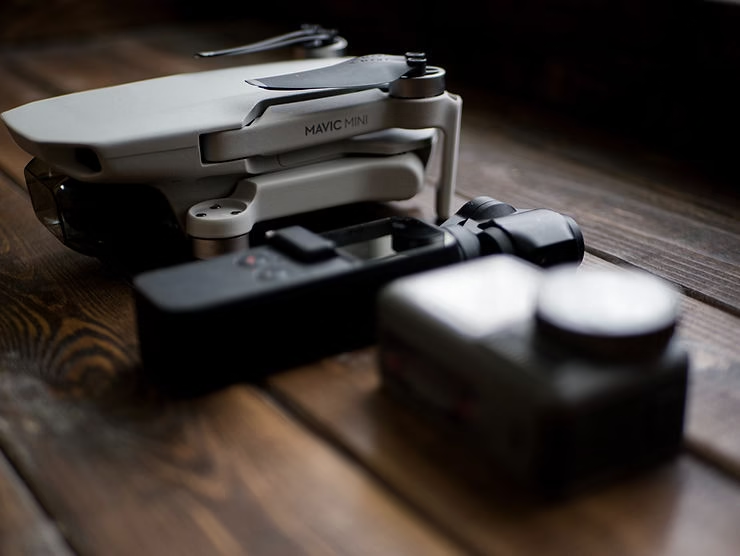
Table of Contents
- The 1-inch sensor and the rotating screen: the two major revolutions
- Video quality and focus: precision at the service of your creativity
- A redesigned user experience: audio, ergonomics and ecosystem
- Pocket 3 vs. Pocket 2: Comparison Table of New Features
- So, are we moving on to the Pocket 3? The verdict for each creator
- DJI Osmo Pocket 3 vs DJI Osmo Pocket 2 FAQ
- When will the DJI Osmo Pocket 4 be released?
- When is the DJI Pocket 3 coming out?
- What is DJI Osmo Pocket 3?
- What is the best price for the DJI Osmo Pocket 3?
- What is the battery life of the DJI Osmo Pocket 3?
- When is the DJI Mini 4 coming out?
- What’s new at DJI for 2025?
- What is the photo quality of the DJI Osmo Pocket 3?
- How to zoom with Osmo Pocket 3?
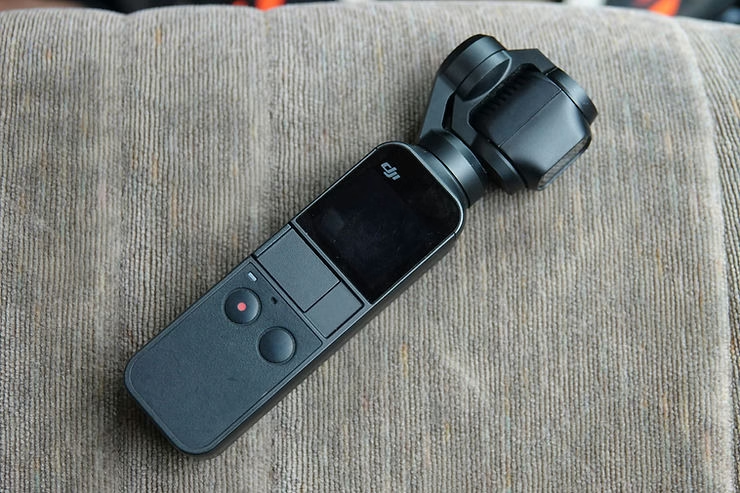
The 1-inch sensor and the rotating screen: the two major revolutions
You’re ready to capture a key moment, but the light is fading and your old gear is forcing you to choose between overexposed and overly dark images. Need a solution that saves you from these headaches? Good news: the DJI Osmo Pocket 3 reinvents the very foundations of portable video creation .
This model isn’t just an evolution. With its 1-inch sensor and rotating screen, it directly addresses the frustrations of creators. Want to capture the beauty of a sunset without losing detail? Dreaming of instantly switching between cinema and social media formats? We reveal why these two innovations will change the way you film .
Bigger, brighter: the new 1-inch CMOS sensor is a game changer
Do you often film in the evening or indoors? The Pocket 3’s 1-inch sensor is your best friend. Compared to the previous version’s 1/1.7-inch sensor, this larger size captures more light. The result: sharp videos even in a poorly lit room , without the grain that would ruin your edit.
Imagine filming a sunset without the clouds turning into blinding white patches. Or capturing a nighttime street scene with details so sharp it looks like it was shot in broad daylight. Expanded dynamic range preserves nuance in shadows and highlights , saving hours of post-production editing.
No more framing hassles: the 2-inch rotating screen
Who hasn’t struggled to adjust their Osmo Pocket 2 to portrait mode? The Pocket 3’s 2-inch touchscreen solves this problem . No more awkward handling when filming vertically: a simple gesture is all it takes to switch from 16:9 to 9:16.
This evolution is a real boon for content creators. Are you toggling between YouTube and TikTok? The rotating screen adapts instantly, eliminating the risk of missing a shot due to a bad angle. A reflex for your stories! No need to edit the orientation after filming, you save a lot of time in editing .
- Professional image quality , even in extreme light conditions
- Precise real-time control and framing with the touchscreen
- A smooth transition between horizontal and vertical format , ideal for social networks
- Less retouching required thanks to optimized exposure at capture
Video quality and focus: precision at the service of your creativity
Mobile vloggers dream of a tool that combines professional quality with ease of use. The DJI Osmo Pocket 3 answers this call with concrete improvements, highlighting the practical benefits for videographers on the go. From then on, you can say goodbye to compromising between quality and practicality .
Upgrade to 4K/120fps and 10-bit color
Need ultra-smooth slow motion in 4K? The Pocket 3 doubles the frame rate compared to its predecessor. By going from 4K/60fps to 4K/120fps, your footage becomes more fluid. Imagine a slow-motion shot without compromising on definition – useful for capturing quick movements like a jump or a splash. Good news: you can create sports or nature videos with a new level of detail.
The 10-bit revolution arrives with D-Log M and HLG. These profiles expand the dynamic range, capturing more detail in shadows and highlights. In post-production, you have more room for color grading. The result? Videos with natural colors and depth in every frame, like a sunset or a lit interior. Editing a city map? The lights on signs remain detailed, without highlighting.
Tip: To take advantage of the 130 Mbps speed, choose fast SD cards. Discover compatible models here . V30 or UHS-II cards guarantee a stable speed , avoiding errors during long recordings. They also speed up file transfers, saving time when you need to deliver quickly.
Compared to the Pocket 2, this is a game changer: previously, shooting in 4K/60fps required heavy software to smooth the footage. Now, 4K/120fps records smooth streams directly , reducing editing time. Ideal for field shoots on a tight schedule. Filming the Northern Lights? No detail is missing, even in low light.
ActiveTrack 6.0: topic tracking that never lets you down
Filming in a crowd? ActiveTrack 6.0 works with Full-Pixel Fast Focusing for responsive autofocus. Even if your subject moves out of frame or moves quickly, the camera instantly catches it . Perfect for fast-paced environments like a market or a sports competition. Following a child running? The image stays sharp, with no motion blur.
The system analyzes every pixel on the 1-inch sensor, which is larger than the Pocket 2’s (1/1.7 inch). The result: smooth framing and 20% faster focusing. Filming a fast-moving animal? The Pocket 3 stays locked on it, without any unwanted shakiness. A decisive advantage when you’re working alone, without a technical team.
Compared to the Pocket 2, this version eliminates the old hesitations. From then on, you can focus on your subject, not on the technology. And voilà! Your video comes out usable, without editing . ActiveTrack 6.0 also adapts to sudden movements, adjusting the focus in real time. A feat for spontaneous vlogs where every second counts. Change angles in the middle of filming? No bugs, the camera follows without latency.
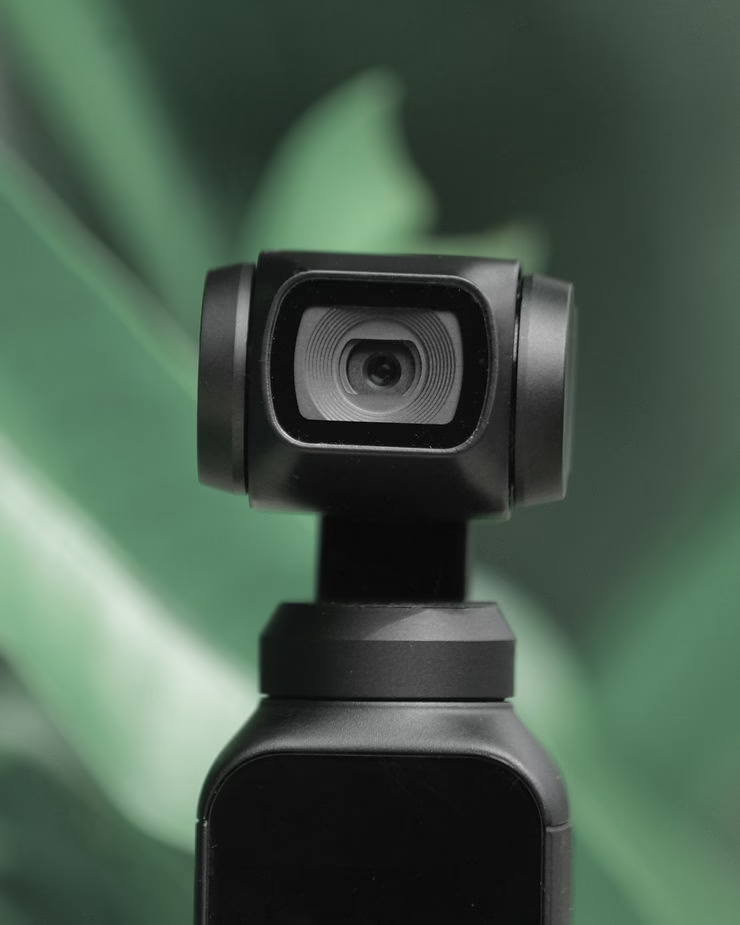
A redesigned user experience: audio, ergonomics and ecosystem
Clearer sound and native wireless compatibility
Need crystal-clear audio for your interviews? The Pocket 3 features three microphones optimized to reduce wind noise and capture directional stereo sound. But the real news? It integrates native compatibility with the DJI Mic 2 via Bluetooth . No more tangled cables: connect up to two Mic 2 transmitters directly to your camera. The result? Pro audio without cables, ideal for vlogging or documentaries on the go. Imagine an interview in the mountains: the microphones capture what’s being said without amplifying the wind, while the Mic 2 sends a stable signal 10 meters away. Tip: The Pocket 3’s Bluetooth 5.0 connection is established in less than 10 seconds, saving time on express shoots.
Tip: With 18 hours of battery life and 32-bit audio recording, you can avoid unwanted interruptions . Each DJI Mic 2 transmitter stores up to 14 hours of uncompressed audio in case of interruptions. This is a valuable backup when filming on the go. Outdoors, you can even pair one transmitter with your guest’s microphone and a second with a tabletop microphone for ultra-clear dialogue.
Handling and new accessories: more versatility
The Pocket 3 is slightly thicker (139.7 mm vs. 124.7 mm) and heavier (179 g vs. 117 g). The good news is that this adjustment makes the grip more balanced , especially during extended use. Less shaking, less fatigue. Perfect for vlogging on the go. Users with larger hands even report it’s more intuitive to use than the Pocket 2, despite the extra weight.
The battery grip extends battery life up to 180 minutes, ideal for long-duration shoots. The mini tripod opens with one click for spontaneous timelapses, and magnetic filters add with a flick of the wrist to tame bright light. Need to shoot horizontally and vertically? The 180° rotating screen eliminates the need to manually flip the camera, saving creators time . In portrait mode, it automatically aligns with the DJI Mimo app, ready to post to Instagram or TikTok.
For those who love versatility, the DJI Osmo Pocket 3 cage, an accessory that expands the possibilities , becomes essential. It allows you to add microphones, lights, or a monopod without compromising stability. From then on, every situation becomes a playground for videographers. Need additional lighting? The cage integrates everything in the blink of an eye. With a Rode VideoMic NTG microphone and an Aputure AL-F 7000 light, you can transform the Pocket 3 into a reporting camera without losing portability.
And there you have it: your portable video kit just got more freedom and creativity. With the Pocket 3 and its accessories, every shot becomes an easy-to-carry miniature studio . As soon as you shoot in “nomad” mode, the balance between autonomy, connectivity and modularity adapts to your daily challenges.
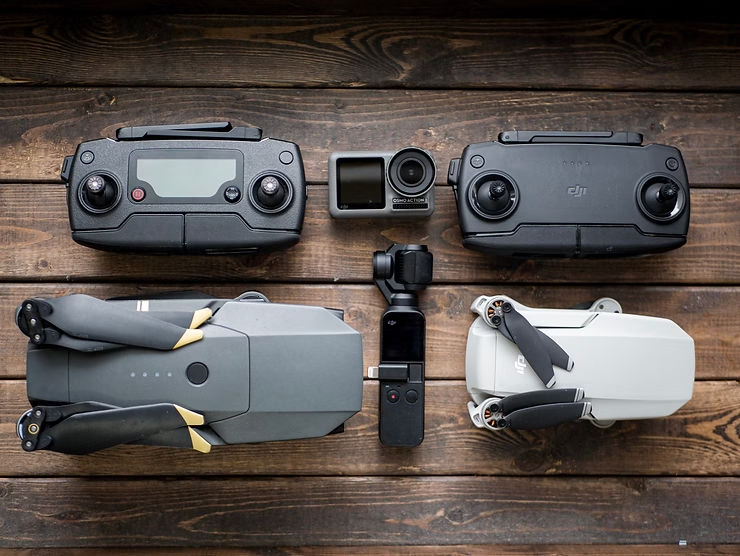
Pocket 3 vs. Pocket 2: Comparison Table of New Features
The essentials at a glance
| Characteristic | DJI Osmo Pocket 2 | DJI Osmo Pocket 3 |
| Sensor | 1/1.7 inch | 1 inch CMOS |
| Screen | Fixed 1 inch | 2 inch rotary |
| Max. resolution. | 4K/60fps | 4K/120fps |
| Color profiles | D-Cinelike 8-bit | D-Log M 10-bit |
| Topic tracking | ActiveTrack 3.0 | ActiveTrack 6.0 |
| Audio | 4 microphones (Matrix Stereo) | 3 microphones (Stereo) + Native DJI Mic 2 compatibility |
| Charging time | 73 minutes (100%) | 32 minutes (100%) / 16 minutes (80%) |
The Pocket 3’s advancements directly address the needs of creators. Need to shoot vertically for TikTok or Instagram? The rotating screen lets you easily frame in 9:16, without a tripod. You’ll save time in post-production—a smart move to improve your workflow .
ActiveTrack 6.0 stabilization is a game-changer. No more unwanted blur: even during fast movements, subject tracking remains smooth. And with the 1-inch sensor, image quality improves significantly, especially in low light. From then on, your videos become more professional , without any extra effort.
Convinced by these improvements? The new generation of DJI pocket cameras is ready to transform your creations .

So, are we moving on to the Pocket 3? The verdict for each creator
Choosing between the two versions depends on your needs. There are some improvements to the Pocket 3 that are worth considering . Let’s break down the key arguments.
If you own the Pocket 2: is the upgrade worth it?
The Pocket 3 brings tangible improvements . Its 1-inch sensor captures 2.5 times more light than the 1/1.7-inch sensor of the Pocket 2, reducing digital noise. The 700-nit rotating screen allows instant vertical tilt without accessories. 10-bit D-Log M increases the usable color shades by 64 times, ideal for creative color grading. Need to film indoors without additional lighting? The f/2.0 aperture accentuates background blur for more immersive portraits.
If you’re shooting outdoors or with controlled lighting, the Pocket 2 is still effective at half the price. Both models have their merits. The key question is: do you need those gains?
What type of creator is the Pocket 3 ideal for?
The travel vlogger: Its 3-axis stabilization and 166 minutes of battery life (26 more than the Pocket 2) allow you to film all day without interruption , even while hiking. In low light, the 1-inch sensor captures usable night scenes, like the streets of Tokyo or sunsets by the sea. The integrated GPS automatically geotags your videos, useful for travel stories.
The social media creator: The rotating screen is a revolution. With a flick of the thumb, switch to vertical mode for perfect framing, without subsequent cropping. Its 700 nits of brightness withstand even direct sunlight, ideal for outdoor tutorials. You gain responsiveness , especially when you need to post content that’s quick to edit.
The demanding amateur videographer: 10-bit D-Log M increases the usable color nuances by 1000 times. This allows you to create cinematic atmospheres, with preserved details in shadows and highlights. From then on, you compete with models like the Insta360 X5 vs DJI Osmo Pocket 3 match .
The DJI Osmo Pocket 3 is revolutionizing the game with its 1-inch sensor, 2-inch rotating screen, and 4K/120fps. Perfect for vloggers and demanding creators, it simplifies editing and offers professional quality . Need a versatile and creative tool ? Is the Pocket 3 ready to become your ultimate ally ?
DJI Osmo Pocket 3 vs DJI Osmo Pocket 2 FAQ
When will the DJI Osmo Pocket 4 be released?
No official release date for the Pocket 4 yet! DJI typically releases a new generation every 2-3 years . The Pocket 3 has only just been released, so the 4 won’t arrive until 2026/2027 . As soon as there’s something concrete, you’ll be the first to know . In the meantime, enjoy the Pocket 3 for your videos!
When is the DJI Pocket 3 coming out?
Good news: the Pocket 3 has been available since October 2024 ! You can already buy it on the official website or at retailers . A word of advice: if you’re hesitant, don’t wait too long . Stocks are going fast, especially for bundles with accessories (Mic 2, cage, etc.).
What is DJI Osmo Pocket 3?
The Pocket 3 is the next generation of pocket cameras from DJI! It replaces the Pocket 2 with major improvements : a 1-inch sensor for significantly cleaner videos in low light, a 2-inch rotating screen for vertical filming (TikTok/Reels), and native compatibility with the DJI Mic 2 for quality wireless audio. In short: more power, more freedom.
What is the best price for the DJI Osmo Pocket 3?
The base price is around €449 for the solo kit (camera + basic accessories). But the interesting combo is the bundle with the DJI Mic 2 (around €649). As soon as you want professional sound, this is the must-have . Tip: keep an eye out for DJI promotions or bundled offers with the cage or ND filters. You can save up to €100!
What is the battery life of the DJI Osmo Pocket 3?
In normal use, you can easily get 2 hours of continuous filming . With the optional external battery grip, you can get 4 hours . And the icing on the cake: charging is super fast ! 80% in just 16 minutes. Need to recharge between takes ? You don’t even have to wait for your coffee to get back to filming.
When is the DJI Mini 4 coming out?
No official announcements for the Mini 4, but DJI tends to refresh this lineup every year . It’s aiming for a 2025 release . If you want a lightweight drone before then, the Mini 3 Pro is still a great choice . And if you just want to film handheld, the Pocket 3 is there for you.
What’s new at DJI for 2025?
In 2025, DJI is focusing on professional quality in compact formats . The Pocket 3 is one example: 1-inch sensor, 4K/120fps, ActiveTrack 6.0. Not to mention software like D-Log M 10-bit for advanced calibration . And on the drone side, models with 360° obstacle avoidance should be on the horizon.
What is the photo quality of the DJI Osmo Pocket 3?
The Pocket 3 is n’t just for videos ! It also takes 64-megapixel photos, with stunning detail thanks to the 1-inch sensor . In low light, it’s on par with a high-end smartphone, or even better . And if you want RAW, you can edit your photos in Lightroom or Photoshop. For such a small format, it’s a surprise!
How to zoom with Osmo Pocket 3?
Zooming with the Pocket 3 is child’s play . You pinch the touchscreen to zoom up to 6x in HD (without loss of quality) . Beyond that, you can go up to 8x, but be careful, the image starts to degrade a little. A reflex for close-ups: activate the stabilizer in “Pro” mode to keep your video smooth even when zoomed in . And there you have it!

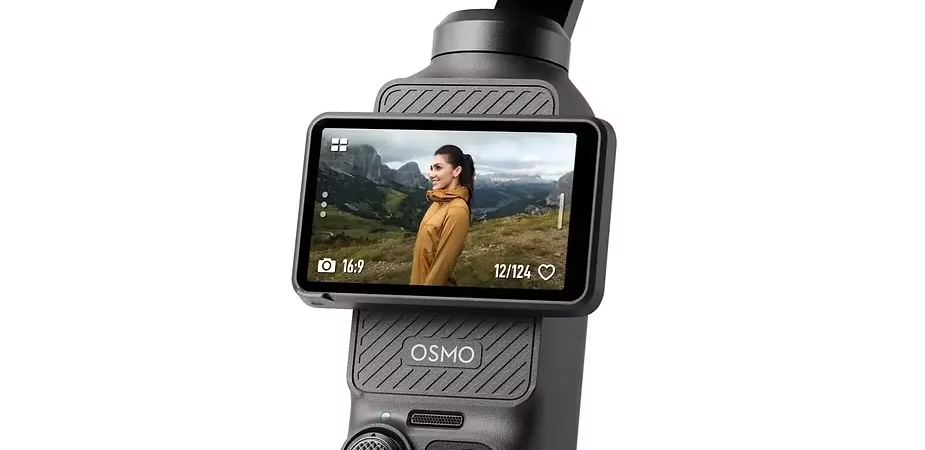

Leave a Reply